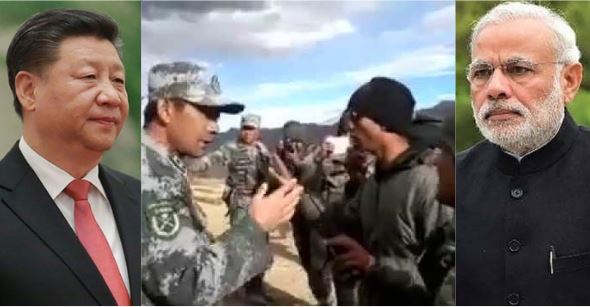China, for reasons best known to the world community, continues to be overestimated both as a military and economic superpower. This, despite the fact that the only country which has given the Chinese a bloody nose in recent times – India, has comprehensively been able to burst the bubble around Chinese military superiority, at least against it, in the Himalayas. Repeatedly, international think tanks and foreign governmental intelligence reports have stamped authority on the fact that the Chinese military is nothing close to what it is made out to be, and that India has been able to deliver strong punches to the Chinese armed forces, much to Beijing’s surprise.
As per an American intelligence report by Stratfor, China learned quite a harsh lesson after the Doklam military standoff of 2017 between India and China, where, for the first time in many years, the Chinese Communist Party and its private militia – the PLA were faced with an unnaturally aggressive India, which was adamantly demanding a Chinese withdrawal from Doklam and a stoppage of road construction activities in the disputed tri-junctional plateau.
“The Doklam crisis appears to have shifted China’s strategic objectives, with China more than doubling its total number of airbases, air defence positions, and heliports near the Indian border over the past three years,” said the report authored by Sim Tack. It went on to add, “Indian and Chinese forces clashed in the Doklam region in June 2017. Since then, China has started constructing at least 13 entirely new military positions near its borders with India, including three airbases, five permanent air defence positions and five heliports.”
China went on an infrastructure building maniacal spree along the Line of Actual Control because it was forced to back off by India in 2017 from Doklam. The humiliation and embarrassment which Xi Jinping faced three years ago continues to haunt him, and much to his and the CCP’s dismay, India has grown only more assertive along the border with China in the past three years, not allowing the red rogue state’s army to do as they please along the Himalayas.
China had barely recovered from the setback it received in Doklam, when the Indian Army, backed by a strong political leadership, whacked the living daylights out of China and its army on June 15 in Galwan valley. While the PLA attempted to launch a primitive guerrilla offensive against the Indian Army at Galwan, it was given a bloody nose in return, in a move which earned India global appreciation for standing up and hitting back at China’s expansionist tendencies.
Late last month, the Indian Army, accompanied by the Special Frontier Force (SFF) and the ITBP, launched highly successful pre-emptive operations in and around Pangong Tso lake, securing previously unoccupied dominating heights and hill-top features, the possession of which now gives India a distinctive advantage against the Chinese in the region.
If Doklam in 2017 was an embarrassment, Ladakh in 2020 has turned out to be an unmitigated disaster for China. In what comes as the latest spell of bad news for Beijing, India has conveyed to the top military commanders of the enemy nation that the Indian Army has been given a clear go ahead to fire upon Chinese troops if the need arises, and for self-defence purposes. “We have told our soldiers that they can open fire if there is a fear of their own safety. They can fire for self-defence,” a source told ThePrint.
TFI has been consistently reporting on how the Indian Army and Indian Air Force enjoy an upper hand against the Chinese forces in case of a limited, or even full-blown conflict in the region. While no armed force comes close to the Indian Army when it comes to mountain warfare, the Indian Air Force too enjoys a multi-layered advantage over the PLAAF, despite having lesser number of fighter aircraft.
India is no longer the country which China was able defeat in 1962. Instead, it is a nation which can give China nightmares for any and all of the misadventures which it undertakes at the LAC. Recent instances are testimony to the fact that India has been able to expose the Chinese military as truly that of wimps and sissies, which does not have the required spine to face a battle-hardened Indian Army.


































